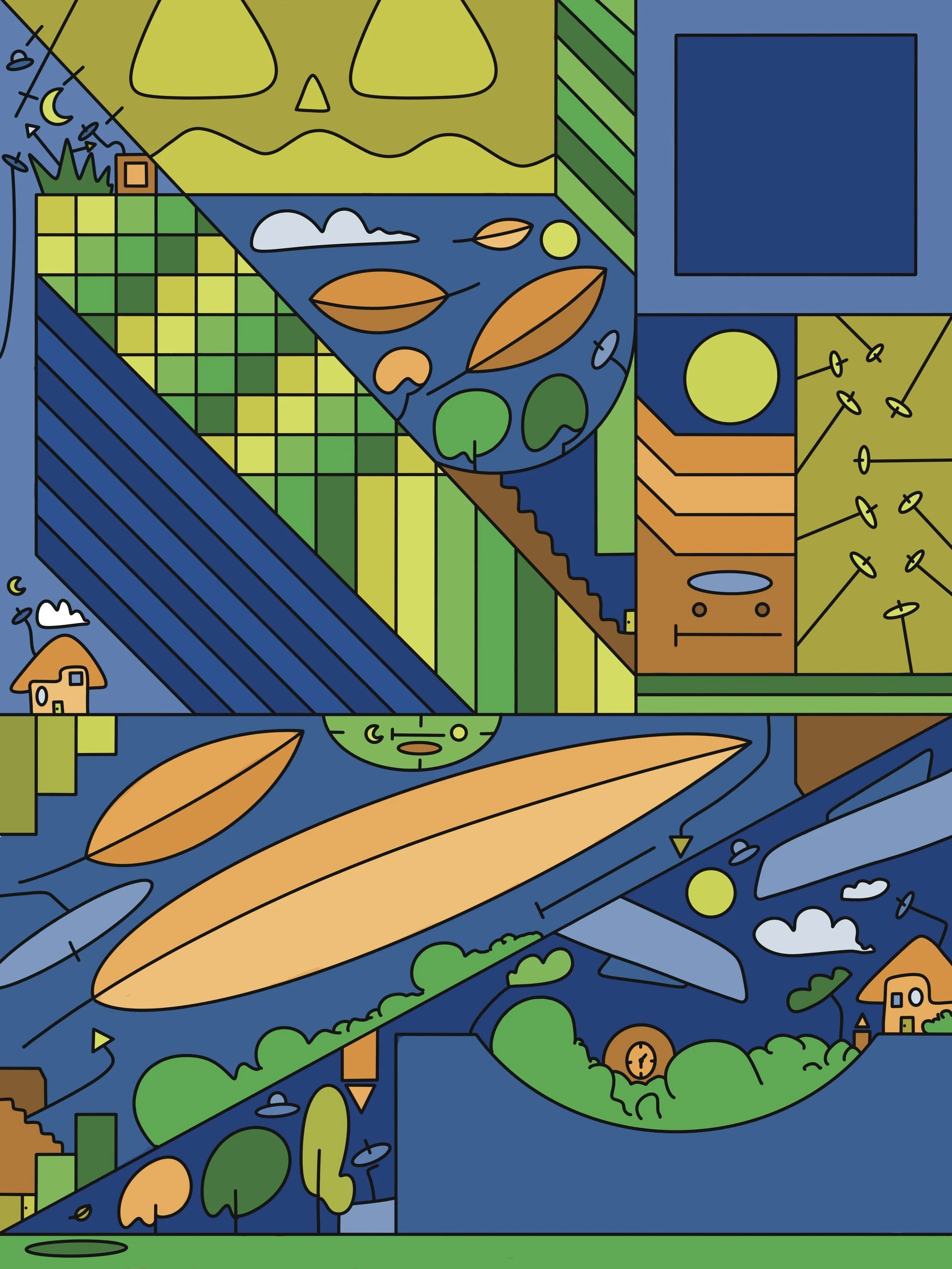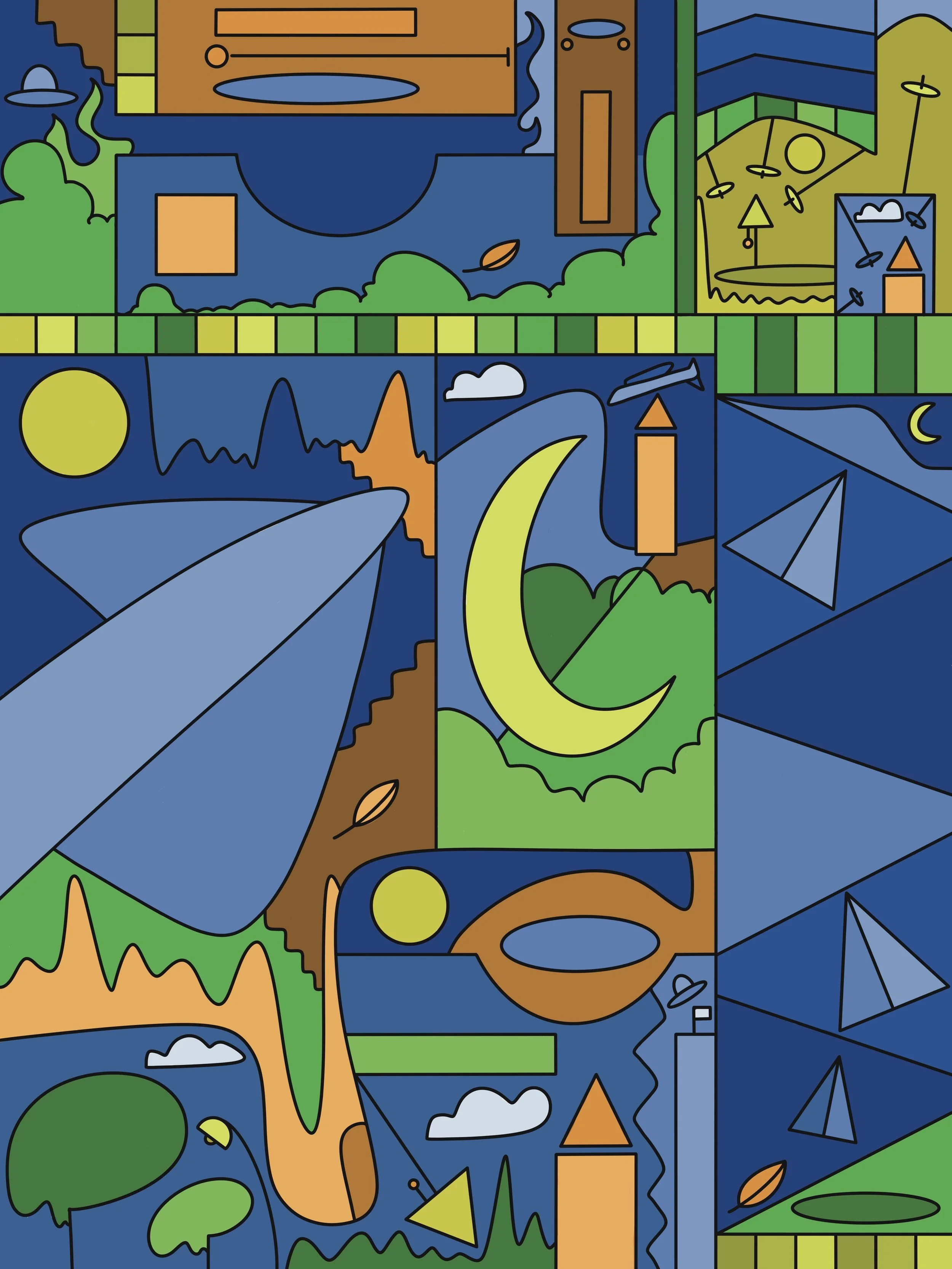Triptych: Nightly News, The Drop Of A Feather & Orson Welles
The project brief was to comprise a triptych illustration series visualizing two random words, nightly news and a feather. Taking this brief a step further I was able to connect conceptuality that was relevant to the real world, historic events and the random words assigned. Tapping on the idea of broadcast hysteria as it related to Orson Welles on the evening of October 30, 1938 reinforced the conceptual framework of the design. The incident itself, centering around a group of radio listeners tuning into varying sections of a War Of The Worlds book reading as it unraveled on a nightly broadcast showcased the fragility of knowledge when faced with the unknown, symbolized by the drop of a feather and the fears that are brought upon by the cover of night. The event was a precursor to talk shows today and the introduction of “fake news.”
The nightly news originated in the 1940s, inspiring the color palette of the illustrations directly with browns, yellows, blues and greens being central. Each piece is an ode to the nightly news in regards to setting and time of day, with abstracted radios throughout each piece signifying its origin in broadcast radio, further relating to the 1930s time period. The nightly news is also symbolic to the satellite discs throughout the scene of triptych designs, a beacon that connects people to the outside world, a place to feel informed and a part of life from the comfort of home which relates to the Fireside Chats which occurred years prior. The nightly news carries complexity in the scope of the 1930s because the primary form of media consumed at the time, the radio was used both to address and soothe the fears and concerns of the people as well as offset and create them. This is showcased in the designs through the sense of construction and placement of elements as well as the feathers which cover but also fall naturally, speaking towards the nightly new’s multifacetedness. Furthermore, this is showcased by the contrast of feathers to airplanes which symbolize flight, correlating to how much reach the nightly news has.
Feathers relate to flight brought on by the variety of planes in the series of triptych designs which carries into the story War Of The Worlds, narrated by Orson Welles on the evening of October 30, 1938. The plane crash, most famous by the novel’s screen adaptation involved a Boeing 747 also famous for fostering connection more than any other aircraft echoing back to the nightly news. The plane is also symbolic of the 1930s since it was the founding decade of American Airlines. The 1930s were a time of war defined by WWII and the Great Depression, relating to the nighttime blues and greenish yellows symbolic of the nightly news but also a souring hope representative of the time period. The 30s were also the start of what would be an onslaught of flying saucer activity taking place in the 1940s which correlates to Orson Welle’s 1938 evening broadcast as well as the greening yellow hues used in the works accompanied by flying saucers and sense of alienation highlighted by the solemness of the homes in the scene. Light represents dream and the moon at night, paired with lamps and other light sources which signal flickers of hope and a desired comfortability that is found in the nightly news, amidst its audience and throughout the texture and nature of a feather.



